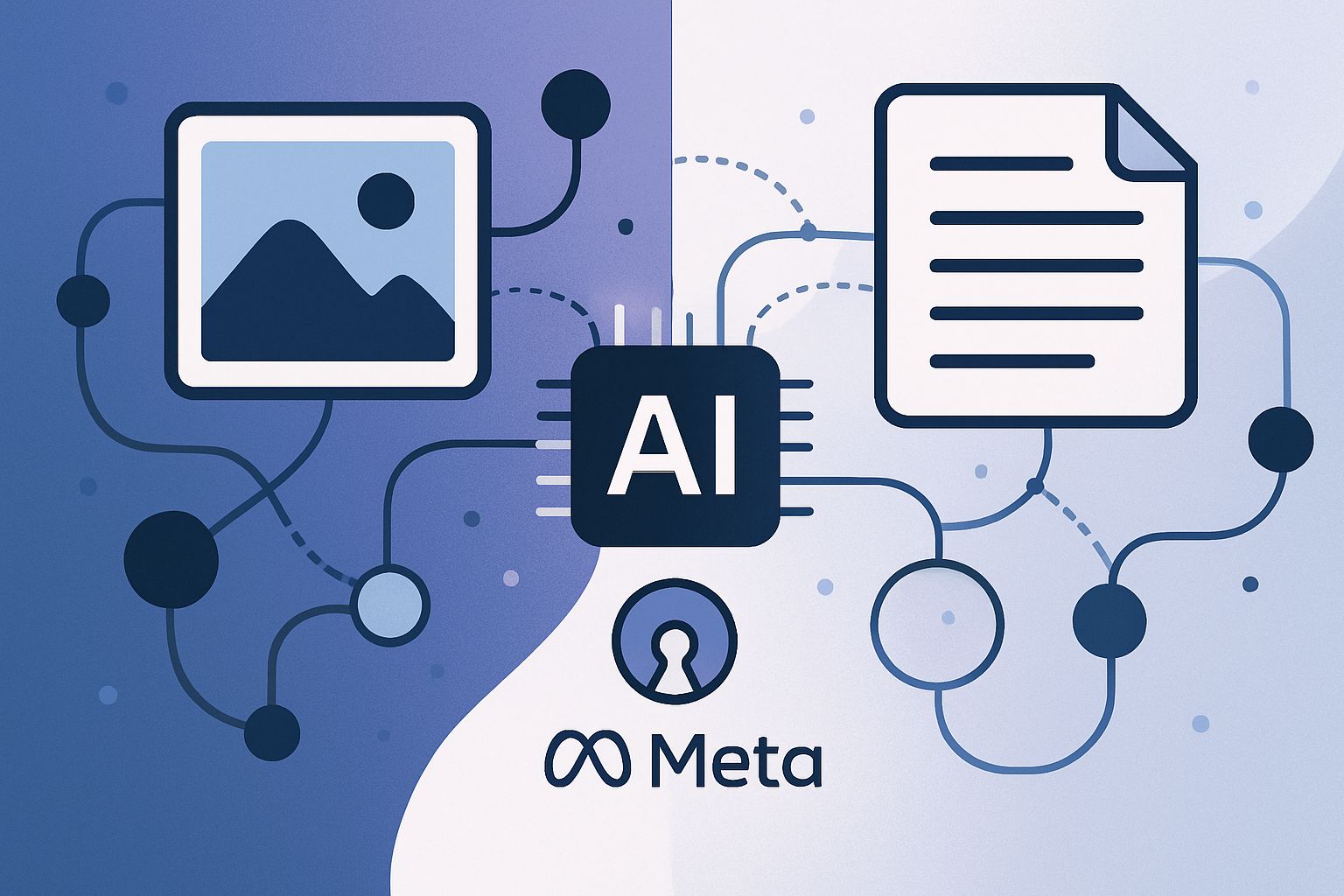
AI CERTS
4 hours ago
Meta’s Llama 4 and the rise of open-source multimodal AI
Meta's April Launch
Meta announced the duo through its newsroom and partner blogs. Furthermore, weights landed on the Hugging Face Hub, AWS Bedrock, and Microsoft Azure catalogs the same day. Scout offers 17 billion active parameters across 16 experts, while Maverick matches the active size but scales to 128 experts for deeper reasoning. However, Behemoth, a two-trillion-parameter teacher, remains in training.

Each model ships under the custom Llama 4 Community License. Therefore, users must accept terms before pulling checkpoints. These specifics underline how the company balances visibility with corporate control.
These launch facts set the scene. Subsequently, technical details warrant closer inspection.
Architecture And Specs
Both releases share an early-fusion backbone that merges visual and text tokens natively. Consequently, developers avoid bolting separate vision encoders onto text pipelines. The mixture of experts architecture activates only selected expert blocks per token, saving compute.
Scout impresses with a 10M context window, letting lawyers, researchers, and coders feed entire codebases or case archives. In contrast, Maverick delivers a one-million-token limit, still far beyond typical models. Additionally, Meta provides BF16 and FP8 checkpoints, while on-the-fly int4 quantization keeps Scout on a single H100.
Hard Numbers Matter
Azure’s card lists 7.38 million H100 hours and 1,999 tons CO₂e for training. Moreover, Hugging Face tables show Maverick at 80.5 % on MMLU-Pro and 69.8 % on GPQA Diamond—scores competitive with DeepMind’s Gemini Ultra.
- Scout: 17 B active / 109 B total, 10M context window, 40 T training tokens
- Maverick: 17 B active / 400 B total, 1 M context, 22 T training tokens
- Quantization: BF16, FP8, optional int4
These specifications demonstrate scale with efficiency. However, licensing considerations may temper enthusiasm.
Licensing And Limits
The Llama 4 Community License grants non-exclusive rights but imposes several constraints. Firstly, companies exceeding 700 million monthly active users must seek separate terms. Secondly, some vendor cards note explicit EU restrictions that block license grants to EU-based entities. Nevertheless, end users within Europe can still access products embedding the models through cloud services.
In contrast to permissive Apache or MIT terms, the license forbids unchecked redistribution. Additionally, attribution rules require visible credit in derivative systems. These caveats spark debate over whether the project truly qualifies as open source or merely open-weight.
Licensing nuances clarify legal exposure. Consequently, benchmark discussions become equally vital for buyers.
Benchmark Integrity Concerns Rise
Meta’s internal team entered an experimental Maverick variant into the LMArena leaderboard. Subsequently, independent researcher Simon Willison criticized the practice, stating the score “is completely worthless” for reproducibility. The incident reopened questions on how vendors compare against the DeepSeek competition and other rivals.
LMArena has since tightened submission policies. Meanwhile, community engineers began running public weights to verify claims. Nevertheless, early results still place Maverick near the top for reasoning and code generation.
These benchmark debates underline trust issues. However, deployment tooling determines real-world performance.
Deployment And Tooling
Hugging Face integrated both models into Transformers v4.51.0 and Text Generation Inference from day zero. Moreover, Red Hat’s vLLM stack supports FP8 pathways, while Ollama ports appear in community repos. AWS Bedrock and SageMaker JumpStart offer managed endpoints, abstracting GPU orchestration.
Engineers can fine-tune Scout on domain data using LoRA adapters under 20 GB of VRAM. Additionally, the huge 10M context window enables retrieval-augmented generation across legal corpora without chunking. Meanwhile, the mixture of experts design keeps token-level latency within interactive bounds.
Certification Boost
Professionals can sharpen deployment skills with the AI Engineer™ certification. Moreover, the course now includes hands-on labs for Llama 4 quantization and safety tooling.
Tooling progress simplifies experimentation. Subsequently, market repercussions come into focus.
Strategic Market Impacts Ahead
Meta positions the release to counter the rapid ascent of the DeepSeek competition and other commercial models. Furthermore, open-weight access undermines closed API cost advantages. Start-ups can self-host Maverick, avoiding token fees while keeping intellectual property internal.
However, EU restrictions may steer European firms toward alternatives such as Mistral or DeepSeek. Additionally, cloud vendors benefit by bundling managed compliance layers around the license, collecting margin on support.
Industry analysts predict a wave of long-context applications. Legal review platforms, genomic research tools, and cinematic script analyzers rank high on early proof-of-concept lists. Consequently, pressure mounts on rivals to publish similar context limits.
These strategic factors reshape the field. Therefore, concise lessons help stakeholders plan.
Key Takeaways Moving Forward
• Meta’s move accelerates open-source multimodal AI adoption yet maintains corporate oversight.
• Scout’s 10M context window broadens document analysis horizons.
• The mixture of experts layout balances scale and cost.
• Benchmark disputes with the DeepSeek competition highlight transparency needs.
• License clauses, including EU restrictions, demand legal review before deployment.
These insights frame critical decisions. Subsequently, readers should synthesize the implications for their own roadmaps.
The article’s guidance empowers technical leaders. However, continual monitoring of updates remains essential.
Conclusion And Action
Meta’s latest release propels open-source multimodal AI to unprecedented length, vision, and efficiency. Moreover, Scout and Maverick showcase how a generous 10M context window, strategic mixture of experts, and broad cloud support can shift enterprise strategies. Nevertheless, contested benchmarks, EU restrictions, and license clauses remind teams to tread carefully. Therefore, decision-makers should test public weights, validate performance, and consult counsel before rollout. Finally, deepen expertise through the linked AI Engineer™ certification and stay ready for the Behemoth scale soon to follow.



